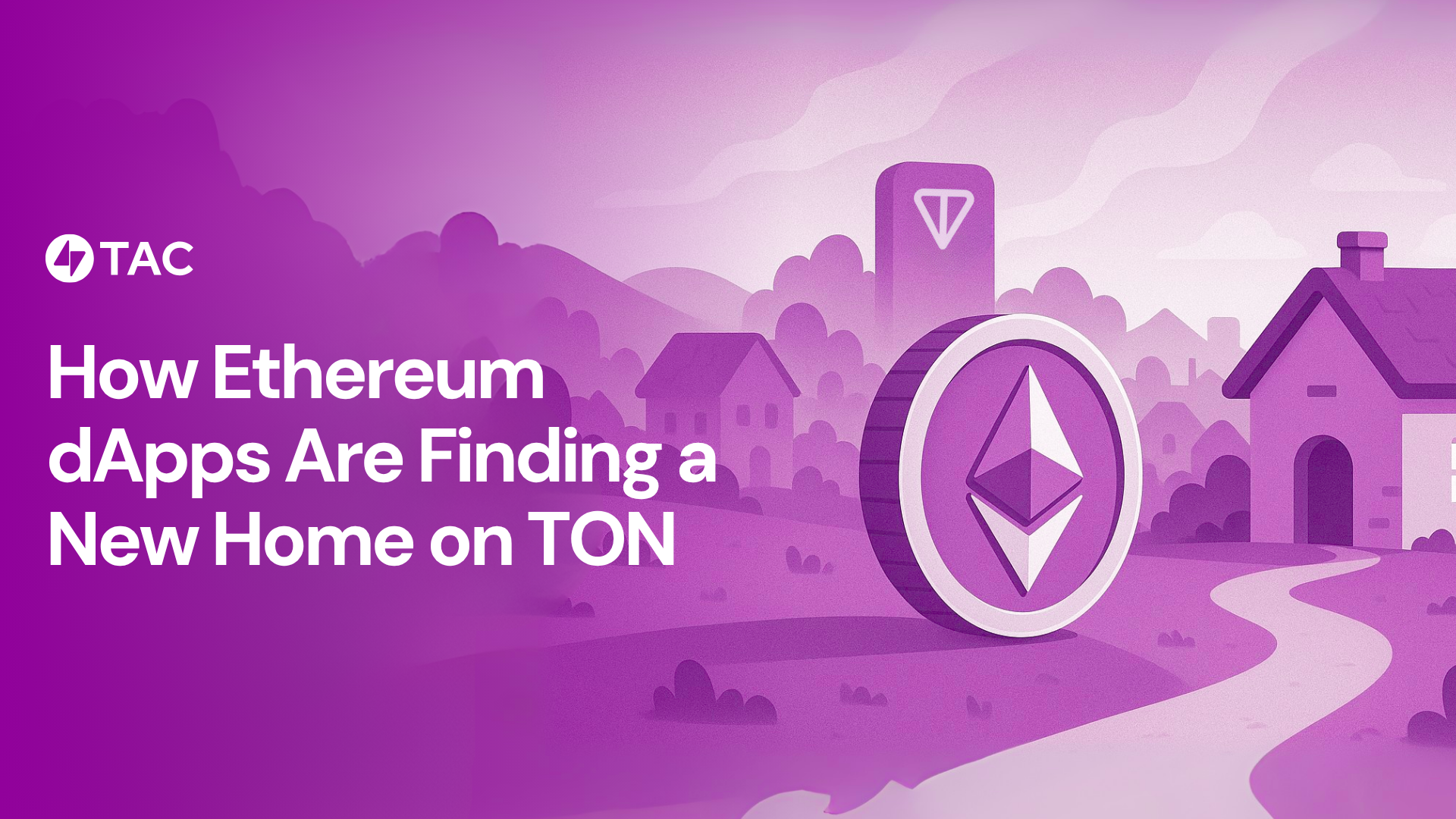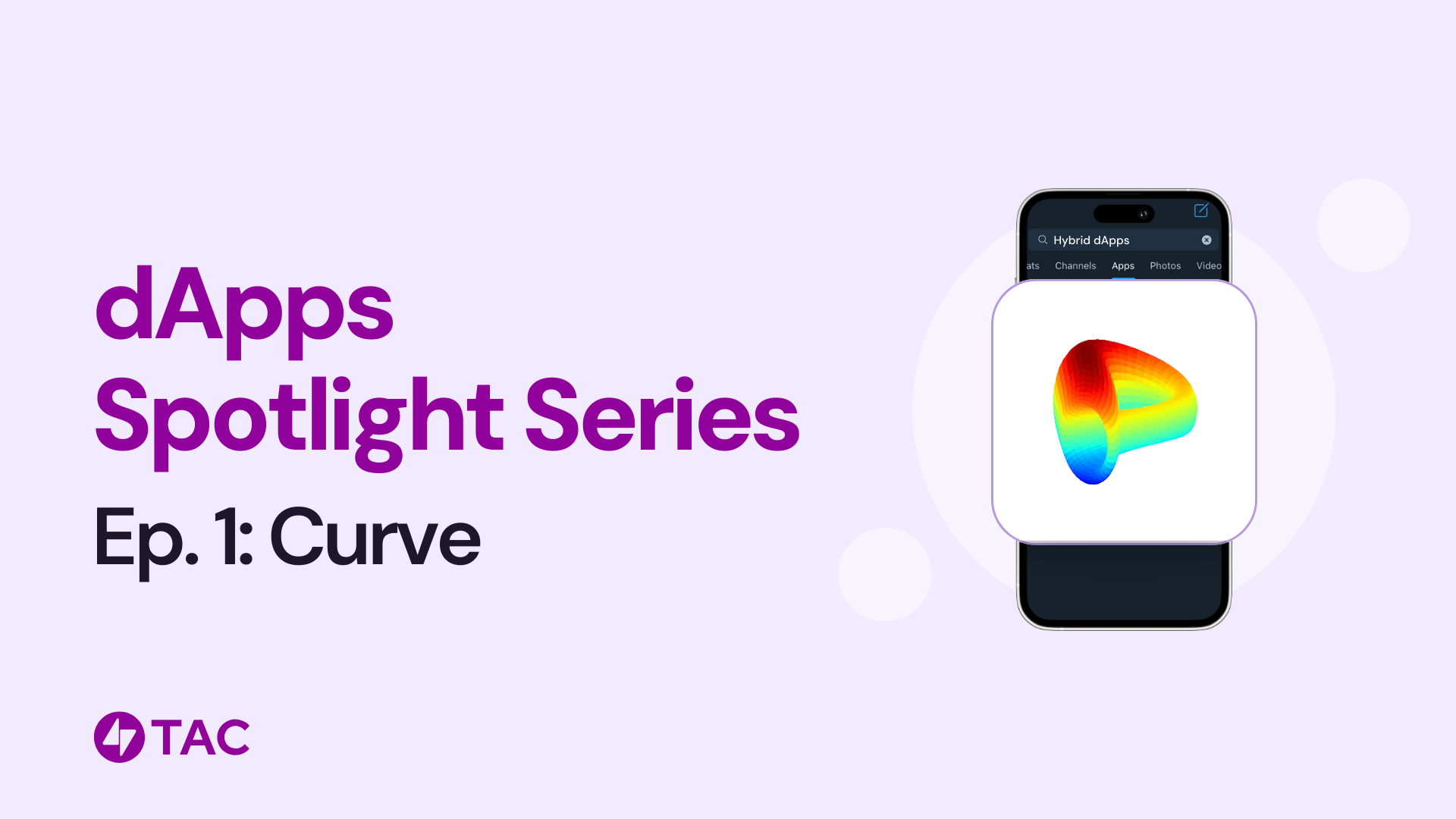In crypto, we often equate innovation with invention, new chains, new VMs, new paradigms. But real innovation? It’s not always what you build. It’s where you ship it.
Ethereum gave us composability. Solana gave us throughput. But no one has cracked distribution. Not really.
Enter TAC.
Because somewhere outside the noise of conference panels and tokenomics debates, a billion people scroll, tap, send stickers, and move value every day. Not on a new L1. Not in a dApp browser. But inside Telegram.
TAC bridges that gap. A new kind of Ethereum-compatible infrastructure built inside the TON ecosystem, letting developers deploy existing Ethereum contracts directly into Telegram — without rewriting a single line of Solidity.
Let’s break this down.
The Distribution Problem No One Talks About
Every dev knows the drill. You ship your smart contracts. You deploy, pass the audit, and the frontend is live. You’re proud of it, maybe even a little hyped. Then… silence.
Here comes the grind: crafting Twitter threads, chasing emissions, begging users not to leave. Protocols don’t die because they don’t work, they die because no one uses them.
Web3 has solved capital access. It hasn’t solved distribution.
That's where TAC comes in. TAC doesn't replace what you've built - it extends where it can reach.
The TAC Architecture in One Sentence
TAC is an EVM-compatible chain that lets you deploy Solidity contracts and access them inside the TON ecosystem.
That’s a mouthful, but it matters. Here’s why:
- Full EVM compatibility: Everything you’ve built on Ethereum: contracts, tooling, audits, CI pipelines, everything just works.
- TON-native access: Users don’t need new wallets or to “bridge in.” They interact through Telegram MiniApps and TON Wallets they already use.
- Cross-chain plumbing done for you: The TAC Adaptor handles bridging, locking, and messaging under the hood.
- No migration pressure: This is not an L2. You’re not fragmenting liquidity. You’re extending it.
Think of it like a deployment environment that lets your protocol plug into Telegram apps as infrastructure, no new mental model required.
dApps as Invisible Infrastructure
Here’s the mental shift. TAC isn’t asking you to build another DeFi app. It’s giving you a way to embed your logic into consumer applications that already have product-market fit.
Imagine a Telegram-native game with 10M users. Instead of building a yield vault, they integrate yours as a power-up mechanic. Instead of spinning up a swap contract, they use yours under the hood. You don’t acquire users, you embed where they already exist.
It’s “middleware” in the best sense: invisible, composable, and revenue-generating.
You’re not selling DeFi anymore. You’re powering the apps that do.
So… What’s the Catch?
No fantasy here. You’ll still need to:
- Deploy contracts to TAC (fresh instances)
- Seed liquidity for those contracts
- Possibly adapt some UI logic for the Telegram MiniApp environment
But critically, you don’t need to:
- Rewrite contracts for a new VM
- Build a wallet SDK from scratch
- Educate users about chains, RPCs, or gas
Because the UX layer is Telegram, and the wallet is already TON-native. You don’t meet users in a browser, you meet them where they’re already tapping.
TAC provides the technical substrate. Adoption is still your job. But now it’s a fight you can actually win, because you’re not fighting for attention on X; you’re shipping inside Telegram.
This Isn’t a Bridge. It’s a Gateway.
Most bridges move tokens. TAC moves execution. Your contracts execute on TAC. The user signs with a TON wallet. The interface is a Telegram MiniApp. And everything works as if it belongs together because through TAC, it does.
That’s what we mean by “native integration.”
It’s not a cross-chain gimmick. It’s a structural merge of Ethereum logic and TON-native user experience, abstracted, seamless, and consumer-ready.
What This Means for Builders
If you're an Ethereum dev with a live protocol, here’s what TAC offers:
- A new audience you couldn’t reach through browser-based dApps. Imagine your protocol, directly accessible to Telegram's massive global user base, many of whom are new to crypto.
- A new distribution interface with viral mechanics built into Telegram. The inherent virality of Telegram's social features can propel your dApp's adoption.
- A way to test product-market fit in high-volume flows before going TVM-native. Gain crucial insights and iterate rapidly with a large user pool.
- A chance to become infrastructure, not just an app. Embed your core logic seamlessly into the Telegram ecosystem, making it a foundational layer for new experiences.
Your DeFi logic doesn’t need to be explained, it needs to be embedded. And TAC makes that possible at Telegram scale.
First Movers: Embedding DeFi's Core Logic
Some of Ethereum’s most battle-tested protocols are exploring this path, not as an experiment, but as a direct extension of their core logic. Curve, Euler, and Morpho are integrating with TAC to bring their lending, swapping, and yield infrastructure directly into Telegram-native environments. These protocols are becoming the underlying engines for a new wave of user-friendly financial applications on Telegram and TON, acting as true first movers in this space.
This isn't about bridging assets in the traditional sense; it's about bringing their execution environments directly into the Telegram experience. Users won’t know they’re using Curve; they’ll just know they’re swapping assets instantly, inside a Telegram MiniApp. This seamless integration allows for powerful new use cases:
- Plug DeFi into games: Imagine a user earning passive yield directly within a Telegram game, powered invisibly by Euler's robust lending protocol. The financial mechanics are abstracted away, making crypto accessible and fun.
- Remittance with embedded yield: A remittance app could embed Morpho’s efficient lending logic directly into a Telegram Wallet, offering users yields on their funds even as they send money across borders. This transforms a functional tool into a financial opportunity.
- Invisible DEX power: A decentralized exchange (DEX) interface can use Curve under the hood for stablecoin swaps, and the user never once thinks about LP tokens or gas fees. The complexity of DeFi is handled in the backend, providing a smooth and intuitive user experience.
By abstracting away the complexities of blockchain, TAC, in partnership with protocols like Curve, Euler, and Morpho, is paving the way for truly mass adoption of DeFi within the Telegram ecosystem.
Final Thoughts: The Future Isn’t Just On-Chain. It’s In-App.
The next billion users won’t install MetaMask. They won’t read your docs. They won’t bridge tokens from L1 to L2 to L3 and back.
But they will tap a button in a Telegram app.
And when they do, your contracts could be the ones powering that interaction, silently, reliably, and profitably.
TAC won’t do your marketing for you. It won’t make your protocol go viral. But it gives you something Ethereum alone can’t: an interface people already use.
That’s not an upgrade. That’s a distribution channel.
And for developers who’ve already built something great, that might be exactly what comes next.
.png)










.jpg)

